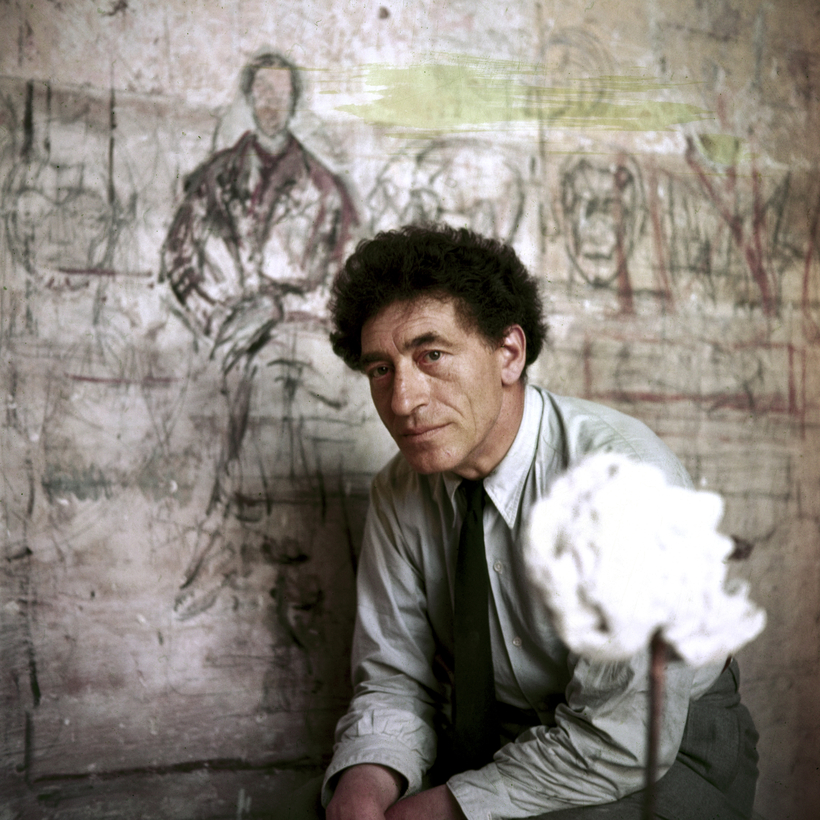Alberto Giacometti (1901–66) stands outside modern art’s broad historical narrative of revolutionaries versus traditionalists. Where other members of the avant-garde were guided by their imaginations or emotions, Giacometti evolved an aesthetic rooted in close observation of the subject before him, thus declaring his allegiance to the past. At the same time, he explored the most forward-looking ideas about perception, representation, and what it meant to see and depict the world. This made him, uniquely, both reactionary and modern—a radical conservative.
Giacometti started out as a member of the Surrealist movement. Beginning in the early 1920s, he made semi-abstract sculptures that dealt with themes of sexual violence (Woman with Her Throat Cut) or dreamworlds (The Palace at 4 a.m.). By the mid-1930s, he had begun to feel that there was little difference between these fine-art objects and the vases and lamps he was designing for an interior decorator, commercial objects that helped pay the rent. Both were realizations of a preconceived image and thus, to him, somewhat arbitrary creations and pretty much interchangeable. Giacometti wanted his art to be grounded in lived experience.

This drew him to the human figure. What interested him was not a person’s appearance but the way we perceive that individual: as a unity seen at a distance within a distinct spatial environment. Giacometti had glimpsed his girlfriend Isabel Nicholas outdoors one day in 1937, and, as he later described it, “the sculpture that I wanted to make of this woman was exactly the vision that I had had of her when I saw her in the street, some way off.”
And so he began using models. For the rest of Giacometti’s life, family, friends, acquaintances, and lovers would sit for him for days, weeks, even months at a time in his famously cramped, unkempt studio as he modeled clay in an effort to capture, in sculpture, not who they were but what he saw, not merely the figure but the surrounding space. (The studio can be viewed today, reconstructed and looking just as the artist left it, at the Fondation Giacometti, in Paris.) It is this body of work that is the subject of “Alberto Giacometti: Toward the Ultimate Figure,” an exhibition opening this week at the Cleveland Museum of Art.

For his act of modernist apostasy, Giacometti was summarily exiled from the Surrealist group. “Everybody knows what a head is!” its leader, André Breton, scoffed. Giacometti remained unfazed. Yet he could not escape the realization that the longer he studied the subjects before him, the more elusive became the goal of pinning down his perception. “It’s impossible,” he would often exclaim. Yet he kept going.
There is something Sisyphean about the task that Giacometti set himself. Along with his art, it is the nature of his struggle—the artist doggedly pursuing his vision in the face of insuperable odds, all the while refusing to compromise—that draws us to him, compels our attention, and explains his enduring place in the annals of 20th-century art. —Eric Gibson
“Alberto Giacometti: Toward the Ultimate Figure” opens at the Cleveland Museum of Art on March 12
Eric Gibson is the Arts in Review editor of The Wall Street Journal and the author of The Necessity of Sculpture: Selected Essays and Criticism, 1985–2019


 Discover
Discover